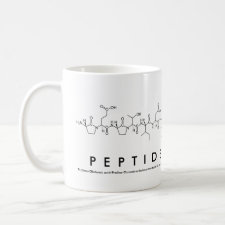
Authors: Matsumoto K, Kawamura A, Miyata T
Article Title: Conformationally Regulated Molecular Binding and Release of Molecularly Imprinted Polypeptide Hydrogels That Undergo Helix-Coil Transition.
Publication date: 2017
Journal: Macromolecules
Volume: 50
Issue: (5)
Page numbers: 2136-2144.
DOI: 10.1021/acs.macromol.6b02688
Abstract: Polypeptides have inherent secondary structures, such as α-helix, β-sheet, and random coil structures, depending on their amino acid sequence. β-Cyclodextrins (CDs) as ligands of molecular recognition sites were introduced into poly(l-lysine) (PLL), which undergoes a structural transition in response to a pH change. CD-introduced PLL (CD-PLL) hydrogels with dynamic molecular recognition sites for bisphenol A (BPA) were strategically designed by molecular imprinting, where BPA was used as a template molecule with a minute amount of cross-linkers. The resulting BPA-imprinted CD-PLL hydrogels with a random coil structure underwent a change in volume in response to the target BPA because the ligand CDs formed a complex with BPA. Additionally, a change in pH induced a structural transition of the CD-PLL chains from the random coil to an α-helix, followed by a conformational change of the molecular recognition sites within the BPA-imprinted CD-PLL hydrogels. As a result, BPA adsorption into the BPA-imprinted CD-PLL hydrogels strongly depended on pH. The molecular recognition ability of the BPA-imprinted CD-PLL hydrogels was controlled by the helix-coil transition of the PLL chains. BPA, as a model drug, was loaded within the CD-PLL hydrogel networks by molecular imprinting, and the BPA template was not extracted from the hydrogel networks. The drug release from the drug-loaded CD-PLL hydrogel was regulated by the pH-responsive structural transition of the PLL chains, which could control the stability of the inclusion complex between the drugs and CD ligands. The fascinating properties of the BPA-imprinted CD-PLL hydrogels with dynamic molecular recognition sites suggest that they exhibit potential as suitable drug carriers inspired from the allosteric effects of proteins
Template and target information: bisphenol A, BPA



Join the Society for Molecular Imprinting

New items RSS feed
Sign-up for e-mail updates:
Choose between receiving an occasional newsletter or more frequent e-mail alerts.
Click here to go to the sign-up page.
Is your name elemental or peptidic? Enter your name and find out by clicking either of the buttons below!
Other products you may like:
 MIPdatabase
MIPdatabase









